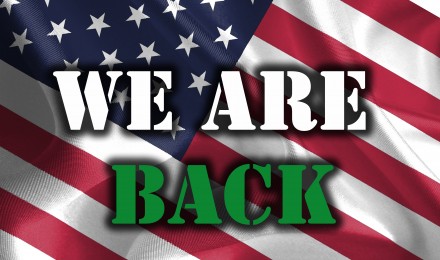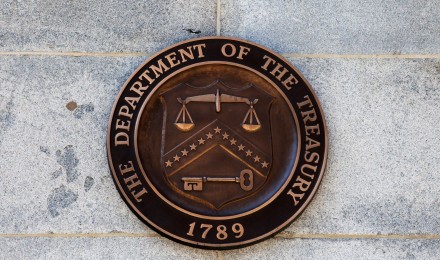There is a common question hovering around most college campuses these days. It usually goes, “Will my subsidized student loan rate double in the coming weeks?”
Many lawmakers are saying that there will be a bargain reached across partisan lines, but didn’t they say the same about the Sequester?
…Look how that turned out.
Before we go in depth, let me explain several of the details.
The Stafford loan, as it is called, is a federally funded program that uses taxpayer money to offer loans to college students. These loans are offered to those who are enrolled more than half-time in a college or university.
Two types of Stafford loans are available to students. A subsidized Stafford loan is offered to students with demonstrated financial need. The US government pays the interest on the subsidized loans, with taxpayer money, until the student has graduated or falls below half-time enrollment. The unsubsidized Stafford loans, in contrast with its counterpart, starts accruing interest as soon as it is issued. Financial aid doesn’t need to be demonstrated in order to apply for an unsubsidized student loan; however, being enrolled at least half-time remains consistent with this variation of the loan as well.
Now, what’s the deal with these interest rates and how will they be changing over time? Legislation passed in 2007 reduced the interest rate on the subsidized loan program from 6.8% to 3.4% over a five-year period. The subsidized rates were set to expire last year, but an extension was issued in 2012. The 2012 extension is scheduled to expire in the coming weeks.
The millions of students who on average take out between $5,000-$9,000 annually would see $170-$300 more (per loan) in monthly payments after graduation. Put into perspective, the average college graduate earns between $30,000-$60,000 upon graduating. After taxes, a graduate will only see between 50%-65% of that amount. Trying to balance costs of living with this debt brings a significant impact to a college grads lifestyle.
Although the 6.8% interest rate sounds frightening, it actually isn’t unheard of. Before 2007, the interest rate on the subsidized Stafford loan was 6.8%. Likewise, the current unsubsidized Stafford loan holds a 6.8% interest rate as well. This change, which occurred in 2007, was weighed in to counter the rising cost of College tuition. Given that colleges increased 23-30% in tuition alone in the past decade, the new 6.8% interest rate will bring much more a burden than it did before 2007.
Does having a higher interest rate mean students will look for other means to pay for college? Or will some students be forced to drop out of college while some high school students forgo higher education?
Time will answer these questions if Congress doesn’t act soon.
In the coming weeks, Congress needs to come to an agreement on student loan rates before the current bill expires on July 1st. Otherwise, millions of young Americans will be faced with a heavy burden on their student loans. Will you or a relative be affected by this change? Take action and let Congress know by signing the countless petitions circulating college campuses today. It may save you thousands of dollars.
There is a common question hovering around most college campuses these days. It usually goes, “Will my subsidized student loan rate double in the coming weeks?”
Many lawmakers are saying that there will be a bargain reached across partisan lines, but didn’t they say the same about the Sequester?
…Look how that turned out.
Before we go in depth, let me explain several of the details.
The Stafford loan, as it is called, is a federally funded program that uses taxpayer money to offer loans to college students. These loans are offered to those who are enrolled more than half-time in a college or university.
Two types of Stafford loans are available to students. A subsidized Stafford loan is offered to students with demonstrated financial need. The US government pays the interest on the subsidized loans, with taxpayer money, until the student has graduated or falls below half-time enrollment. The unsubsidized Stafford loans, in contrast with its counterpart, starts accruing interest as soon as it is issued. Financial aid doesn’t need to be demonstrated in order to apply for an unsubsidized student loan; however, being enrolled at least half-time remains consistent with this variation of the loan as well.
Now, what’s the deal with these interest rates and how will they be changing over time? Legislation passed in 2007 reduced the interest rate on the subsidized loan program from 6.8% to 3.4% over a five-year period. The subsidized rates were set to expire last year, but an extension was issued in 2012. The 2012 extension is scheduled to expire in the coming weeks.
The millions of students who on average take out between $5,000-$9,000 annually would see $170-$300 more (per loan) in monthly payments after graduation. Put into perspective, the average college graduate earns between $30,000-$60,000 upon graduating. After taxes, a graduate will only see between 50%-65% of that amount. Trying to balance costs of living with this debt brings a significant impact to a college grads lifestyle.
Although the 6.8% interest rate sounds frightening, it actually isn’t unheard of. Before 2007, the interest rate on the subsidized Stafford loan was 6.8%. Likewise, the current unsubsidized Stafford loan holds a 6.8% interest rate as well. This change, which occurred in 2007, was weighed in to counter the rising cost of College tuition. Given that colleges increased 23-30% in tuition alone in the past decade, the new 6.8% interest rate will bring much more a burden than it did before 2007.
Does having a higher interest rate mean students will look for other means to pay for college? Or will some students be forced to drop out of college while some high school students forgo higher education?
Time will answer these questions if Congress doesn’t act soon.
In the coming weeks, Congress needs to come to an agreement on student loan rates before the current bill expires on July 1st. Otherwise, millions of young Americans will be faced with a heavy burden on their student loans. Will you or a relative be affected by this change? Take action and let Congress know by signing the countless petitions circulating college campuses today. It may save you thousands of dollars.







